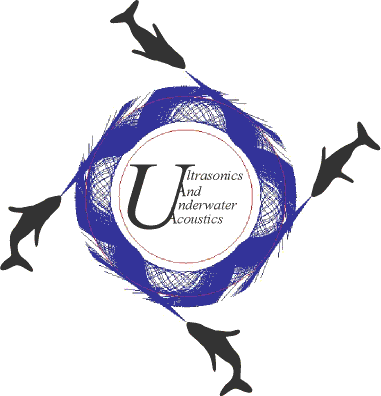|
Space acoustics research at the University of Southampton Centre for Ultrasonics and Underwater Acoustics
Contact: T G Leighton
Acoustics offers the possibility of obtaining complementary information to more orthodox sensors on space probes. Click here and here for more details. Projects on Titan and Europa and discussed below. |
Click on button for |
||
| Titan | |||
|
Before the Huygens probe landed on Titan (moon of Saturn) in January 2005, it was not known to what extent there might be liquid on the surface. Before the landing we simulated the sound of a possible 'methanefall' on Titan by transposing the sound of an Earth waterfall (click here to find out more). We did the same for a possible splashdown of Huygens (click here to find out more).
|
|||
|
Waterfalls and methane-falls |
Splashdown (you will hear the initial splash, followed by gurgling as air-pockets in the frame fill with water, followed by a number of structural 'bumps', followed at the end by the gentle hiss of small bubbles. |
||
|
Titan methane-fall (simulated)
|
Dropping fake space probe into water (real):
Splashdown on Titan (simulated):
|
||
|
After the initial study obtained preliminary spectra, the method was refined, as detailed in the references below:
|
|||
|
Initial study: |
Leighton, T.G. From seas to surgeries, from babbling brooks to baby scans: The acoustics of gas bubbles in liquids, Invited Review Article for International Journal of Modern Physics B, 18(25), 2004, 3267-314
Leighton, T.G. and White, P.R. The Sound of Titan: A role for acoustics in space exploration, Acoustics Bulletin, 29, 2004, 16-23
Leighton, T.G., White, P.R. and Finfer, D.C.
Possible applications of bubble
acoustics in nature (Opening Invited Paper), Proceedings of the 28th
Scandinavian Symposium on Physical Acoustics, Ustaoset, Norway, 23-26
January 2005, CDROM, 2005
|
||
|
Follow-up study: |
Leighton, T.G., White, P.R. and Finfer, D.C. The sounds of seas in space (Invited Paper), Proceedings of the International Conference on Underwater Acoustic Measurements, Technologies and Results, Heraklion, Crete, 28 June-1 July 2005, II, 2005, 833-40 |
||
| Europa | |||
| Europa, moon of Jupiter, is thought to contain a deep ocean beneath a thick covering of ice. In recent years several papers have suggested that acoustics may be used to explore this world: | |||
|
|
|
||
| Our own study looked at propagation through the ocean, and the characteristics of signals that propagate right the way around the moon under the ocean: | |||
| Leighton, T.G., White, P.R., Finfer, D.C. and Grover, E.J. The sounds of seas in space: the ‘waterfalls’ of Titan and the ice seas of Europa, Institute of Acoustics Spring Conference, Futures in Acoustics, Today’s Research – Tomorrow’s Careers, Southampton, UK, 3-4 April 2006, 28(1), 2006, 75-97 | |||
This page was last updated by TG Leighton, 18 June 2007

